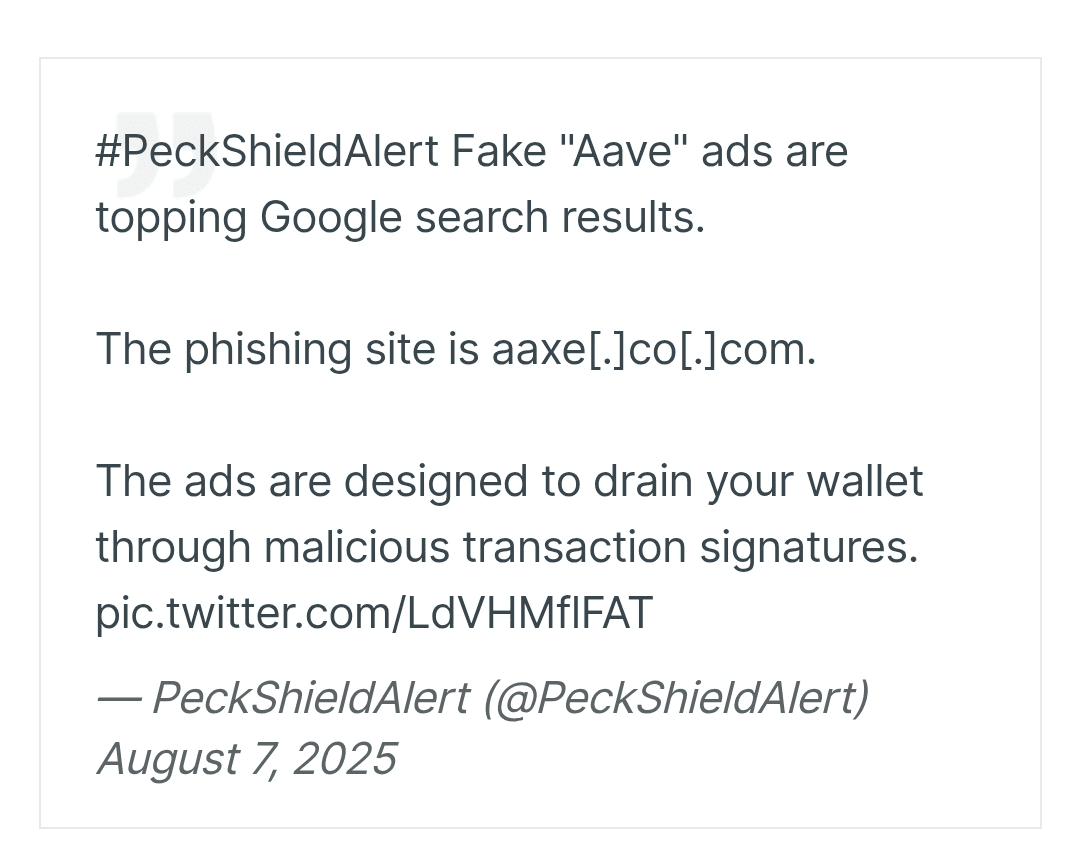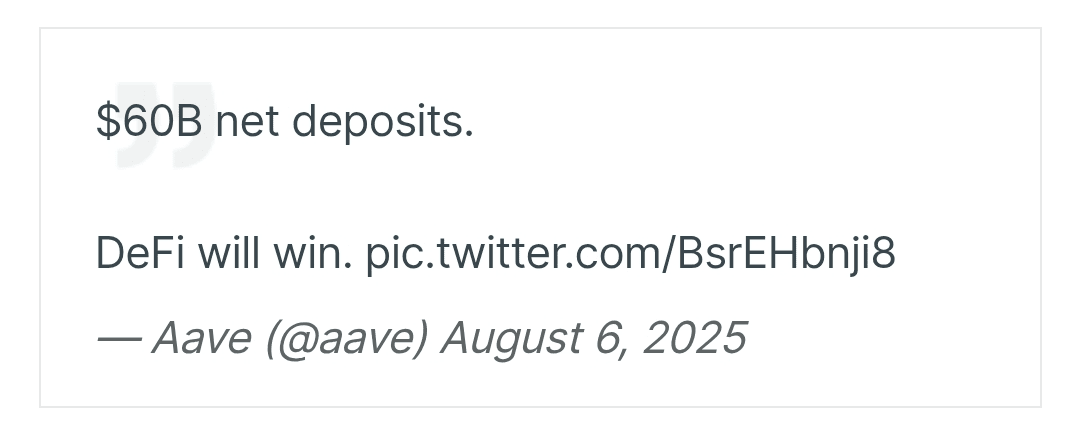Scammers launched a phishing campaign targeting Aave users through Google Ads. This is reported by cybersecurity specialists from PeckShield.
Criminals placed paid ads on Google Ads imitating the official Aave platform. When victims clicked on the links, they were redirected to fake websites where they were asked to connect their crypto wallets. After that, the scammers gained access to the funds.
Such transactions are irreversible. The exact amount of damage is still unknown. Users should carefully check the URLs of websites. In case of wallet compromise, it is urgent to transfer funds to a safe address, contact the provider through official channels, and revoke permissions through services like Revoke.cash.
On the eve of reports about the phishing attack, Aave became the first DeFi protocol whose total net deposit across 14 networks exceeded $60 billion.
According to Token Terminal, the figure has increased more than threefold over the year. In August 2024, it amounted to $18 billion.
Fraudulent campaign on YouTube
At the same time, experts from SentinelLABS reported on another attack on crypto investors. According to them, starting in 2024, criminals are seizing old YouTube channels that published news about cryptocurrencies.
Scammers are advertising trading bots that steal users' funds. Videos are created using AI, and negative comments are promptly deleted.
Victims are offered to deploy a smart contract that conceals the addresses of cybercriminals. After replenishment, the money is sent to the scammers' wallets.
What the instructions for replenishing a fraudulent smart contract look like. Source: SentinelLABS.
According to specialists, users are asked to deposit a minimum of 0.5 ETH (~$1829 at the current exchange rate) to cover fees for launching the bot. One fraudulent address has already received about 244.9 ETH, while two others received 7.59 and 4.19 ETH. In total, this already exceeds $939,000.
"We have recorded the use of the same wallet in several malicious smart contracts. However, many unique addresses are involved, so it is impossible to determine the exact number of fraudsters," emphasized SentinelLABS.
Recall that on August 6, a crypto investor lost $3 million by signing a malicious transaction. A common practice was used in the phishing attack: scammers create fake addresses or links that mimic the usual ones.
https://cryptonews.net/ru/news/security/31394414/